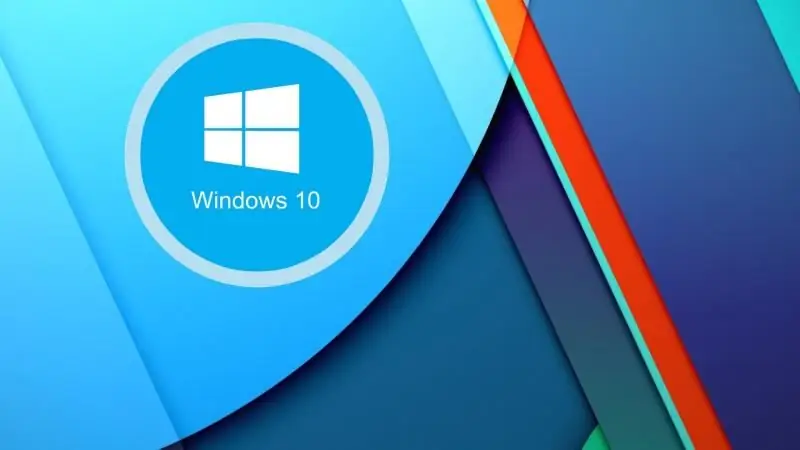
Table of contents:
- Author Bailey Albertson [email protected].
- Public 2023-12-17 12:53.
- Last modified 2025-01-23 12:41.
Desktop customization in Windows 10: how to master the secrets of personalization
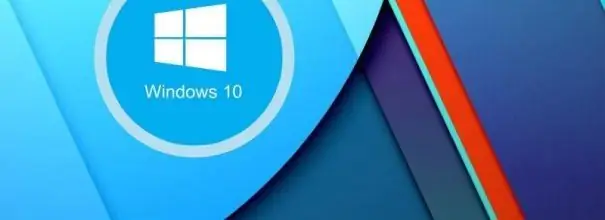
Microsoft's latest operating system, Windows 10, is a collection of sophisticated commands, services, and utilities. They periodically contain technical errors that can lead to disruption of the work of some fundamental processes, including a crash of the desktop. There are many bugs that can affect the functioning of the desktop. Some of them are relatively small, others are global, affecting a number of Windows system files. However, there are effective solutions for all these technical failures.
Content
- 1 Ways to customize the desktop in Windows 10
-
2 Possible problems with the functioning of the desktop and how to solve them
-
2.1 The desktop stopped loading (disappeared)
2.1.1 Video: what to do if the desktop does not load
- 2.2 Desktop is not displayed correctly
- 2.3 Desktop freezes intermittently
- 2.4 The desktop is constantly rebooting
- 2.5 Desktop settings are not saved
-
2.6 Desktop is slow to load
- 2.6.1 Disable nonessential startup applications
- 2.6.2 Clearing the Windows cache
- 2.6.3 Video: Ways to Boot Up Windows 10
-
2.7 Other desktop problems
- 2.7.1 Icons disappeared from the desktop
- 2.7.2 Notification area disappeared
- 2.7.3 Video: How to customize the notification area in Windows 10
-
-
3 Clean up the desktop in Windows 10 using the Vault tool
3.1 Video: How to Use the Storage Tool in Windows 10
Ways to customize the desktop in Windows 10
The desktop settings functionality in Windows 10 is quite extensive. The main set of elements available for customization is combined by Microsoft into one large section "Personalization". You can find it by right-clicking on the desktop screen.

The "Personalization" section can also be found and opened by typing the corresponding query in the search bar in Windows 10
Opening the "Personalization" section, you will see 6 screen settings:
- background;
- colors;
- lock screen;
- themes;
- start;
- task bar.

For a more detailed description of each parameter, you can use the button "Call for help"
In addition to the "Personalization" section, there are settings that can be used directly on the desktop. To do this, right-click on the screen and select the "View" menu. Thanks to the settings of this parameter, you can set the required size of all desktop icons.
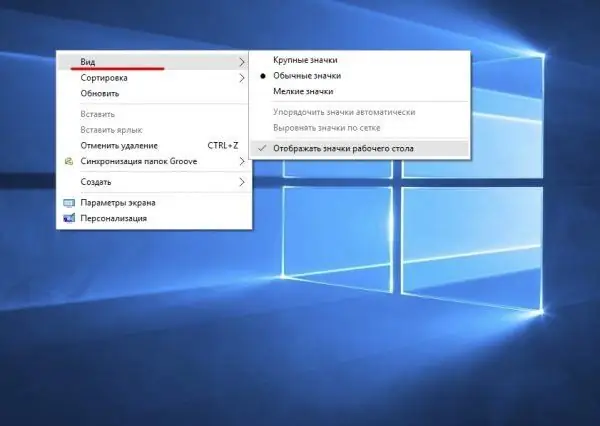
In addition to adjusting the size, ordering and alignment of desktop icons, they can also be hidden by checking the box next to the appropriate option
It's worth noting that Windows 10 lacks the Gadgets desktop setting that was in Windows 7 and 8.1.
If you want to return the Gadgets settings option to your OS, the author of this article recommends using special extensions for Windows 10. For example, Gadgets Revived or 8GadgetPack, which, after installation, return all Windows 7 desktop gadgets. Both programs are distributed free of charge in Russian. In addition, they seamlessly integrate with the latest OS and consume a minimum of your computer's resources.
Potential Desktop Problems and Solutions
If we combine all the existing causes of problems associated with the desktop, then they can be conditionally divided into three large groups:
- virus databases and unwanted software;
- technical failures in Windows;
- corruption of system settings in the Windows registry database.
If you run into any problems with your desktop, check your system with an antivirus program right away. Only after that can you proceed to specific cases and methods of solving them, described below.
Desktop stopped loading (disappeared)
The explorer.exe system task is responsible for automatically loading the desktop. Therefore, if after starting the PC the desktop did not load, then the corresponding command has failed. To fix this problem, you need to manually launch explorer.exe:
-
Start Task Manager by using the Ctrl + Alt + Delete keyboard shortcut.

Windows 10 taskbar menu Task Manager can also be launched by right-clicking on the taskbar
-
Open the File tab menu and click Run New Task. In the line that appears, enter explorer.exe to manually launch the desktop, then click OK.

Windows 10 Task Manager You can also find the required file in the Windows system folder (System32) via the "Browse" button
Video: what to do if the desktop does not load
The desktop is not displayed correctly
The problem is that after booting the system the user is greeted with a black screen. The reason for this error lies in the failure of the RunOnce system process. Everything is solved in a couple of steps:
- Launch the Ctrl + Alt + Delete keyboard shortcut for Task Manager.
-
Disable processes named RunOnce32.exe or RunOnce.exe in the Processes and Services tabs by right-clicking the process and choosing Stop from the menu.

List of running processes in task manager If you stop the RunOnce process in only one of the tabs, then the problem will not be solved
- Reboot your computer.
Desktop freezes intermittently
If the desktop is loaded, displayed correctly, but literally hangs after a couple of seconds, then the cause of the problem lies in the failure of the system registry. To solve it, follow the steps:
- Open the Windows Registry Editor: use the WIN + R keyboard shortcut to start a command prompt and enter the regedit command in it.
-
In the list of registry keys, find the required subkey: HKEY_LOCAL_MACHINES / OFTWARE / Microsoft / Windows NT / CurrentVersion / Image File Execution Options.

Registry Editor in Windows 10 "Registry Editor" can also be launched through a command in the task manager
- In the Image File Execution Options folder, find the explorer.exe section. Right-click on it and select the "Delete" context menu item.
- Reboot your system.
Desktop keeps rebooting
The problem is that the desktop periodically reboots, that is, it completely disappears and reappears after a couple of seconds. And so it is constantly. To fix the problem, you have to make some effort:
- Right-click on the Windows taskbar on the desktop to open Task Manager.
-
Start a new Windows task (File - Run New Task), then enter regedit.

Run window in Windows 10 An alternative launch of the task manager is carried out using the keyboard shortcut WIN + R
- In the system registry window, find the required folder: Computer / HKEY_LOCAL_MACHINE / SOFTWARE / Microsoft / WindowsNT / CurrentVersion / Winlogon.
-
Select the Winlogon key and navigate to the list of available files on the right side of the registry window. Check carefully the values of the files named Shell and UserInit. Their correct meaning should be as follows:
- Shell - explorer.exe;
- UserInit - C: / WINDOWS / System32 / Userinit.exe.
-
If the registry files are damaged, these values will either be different or will be absent (empty field). Therefore, you will need to enter the correct file parameters yourself. To do this, double-click the left mouse button on Shell and UserInit, and then enter the required values.

Registry Editor content in Windows 10 If you change the value of only one of the files, then the problem with restarting the desktop will not disappear
- After closing the Windows registry, restart the system.
Desktop settings are not saved
Every time after restarting the PC, all desktop settings (location of shortcuts, settings for appearance and toolbar) "fly off". The cause of this problem is the failure of Windows system components.
When looking for solutions to this problem, the author of the article repeatedly came across the advice "about creating a new Windows user account." However, this solution is not always able to help. The most effective way, in the author's opinion, is to use the built-in Windows Component Recovery System, the so-called DISM.
To start automatic recovery of system components, do the following:
-
Use the WIN + R keyboard shortcut to start the command line, where enter the cmd command.

Command Prompt in Windows 10 The command line can also be launched through the "Task Manager"
-
In the window that appears, enter the sfc / scannow scan command.

Microsoft Windows system process window When prescribing a scan command, do not forget to leave a space before the slash sign
-
After completing a general scan of the system, it is necessary to check the individual components, including those responsible for the functioning of the desktop. Enter the command Dism / Online / Cleanup-Image / CheckHealth.

Command Prompt Window Even if the scan showed that there are no damaged components, it is still worth carrying out the recovery process
-
When the check is over, enter the command to automatically repair damaged components: Dism / Online / Cleanup-Image / RestoreHealth.

Repair process (DISM) of Windows components through the command window The recovery process usually takes just a couple of minutes
- After the repair process is complete, close the window and restart your computer.
Desktop is loading slowly
The author of the article, having analyzed the possible reasons for the slow loading of the desktop, came to the conclusion that the most critical of them are two: a large number of applications in the system startup and the accumulation of unnecessary files in the cache or Windows registry. The solution to these two problems really brings tangible results in the form of an increase in the speed of loading the Windows system (desktop).
Disable nonessential startup applications
Most of the installed programs (utilities) by default become active at system startup. However, this is not necessary. Therefore, only system files, antivirus and various drivers for components (monitor, video card, sound) should be left in startup. To disable autostart of unnecessary programs, you must do the following:
-
Launch the "Task Manager" (Ctrl + Alt + Delete) and go to the "Startup" tab.

Startup tab in Task Manager in Windows 10 Task Manager can also be launched by right-clicking on the lower Windows taskbar
-
In the list of applications, disable all minor programs by right-clicking on each of them and selecting the Disable option from the context menu.

List of startup programs in Windows 10 In the "Impact on loading" field, you can determine which applications have the greatest impact on the slow loading of the desktop
Clearing the Windows cache
The cache is the storage of temporary Windows files that gradually accumulate on the hard disk. Therefore, it must be cleaned periodically. This can be done as follows:
-
Open This PC and right-click the drive where Windows is installed. In the menu that opens, select the "Properties" item.

Hard disk context menu To clear the cache, it is enough to carry out this procedure only on the disk with the installed Windows system
-
In the properties window that appears, click "Disk Cleanup".

Local drive C properties window You cannot check how full the disk cache is in the occupied disk space
-
Wait until the process of scanning the disk for unnecessary files in the system cache is completed.

Disk cleanup process window The running "Disk Cleanup" process will only collect information about the number and size of unnecessary files on the disk
-
After the check is complete, check the boxes next to the files you want to delete. Then click on the "Clean up system files" button.

Windows cache scan results window It is advisable to check the boxes on all available items
Video: Ways to Boot Up Windows 10
Other desktop problems
Unfortunately, at the points listed above, the problems of the functioning of the desktop do not end there. There are also less common problems, which also have their own solutions.
Icons disappeared from the desktop
The most common cause of this problem is a crash in Windows Explorer. To reboot it, you need to do the following:
- In the Windows Task Manager, find the Explorer system application on the Processes tab.
-
Restart the application by right-clicking on it and selecting "Restart" from the menu that opens.

Processes Tab in Task Manager If the "Explorer" does not work correctly, then its values in all fields will be equal to zero
Disappeared notification area
It so happens that the icons are displayed as needed directly on the desktop, but there is no "Notification area" on the lower taskbar (time, language layout, volume, network status, etc.). To solve this problem, you need to follow these steps:
-
Open the "Settings" through the "Start" menu and select the "Personalization" section in the window that appears.

Personalization option in Windows 10 The "Personalization" preferences window can also be opened through the Windows search bar
-
In the left pane, select the Taskbar category.

Windows 10 taskbar In this parameter there are also several additional settings for the appearance of the desktop and toolbar
-
In the "Notification area" section, alternately open the items "Select icons displayed in the taskbar" and "Turn system icons on and off."

Taskbar options in Windows 10 For a detailed description of all the options for customizing the notification bar, use the help by clicking on the option "How to customize the taskbar?"
-
At these points, turn the switches to On. on the icons that you want to display in the notification bar.

Notification area settings window You can also additionally switch the radio button on the "Always show all icons"
Video: How to customize the notification area in Windows 10
Clean up the desktop in Windows 10 with the Vault tool
The Windows desktop is not just a start window where the user stores various shortcuts, folders and files, it is a whole system partition that contains all useful and useless files (including hidden and temporary). The desktop should be periodically cleaned of unused shortcuts and accumulated unnecessary files. Windows XP had a built-in Desktop Cleanup Wizard. Unfortunately, in subsequent versions of Windows 7, Vista, 8 and 10 this option is not available. However, in Windows 10, some of its functions are performed by the Storage tool.
To clean up using the "Storage" tool, you need to follow these steps:
-
In Windows settings, select the "System" section.

System section in Windows 10 settings You can open the Windows settings window using the keyboard shortcut WIN + I
-
Then go to the item "Storage".

Contents of the "System" section in Windows 10 settings You can also find this parameter through the search bar
-
In the window that appears, select the hard disk where Windows is installed.

List of hard drives in the "Storage" parameter If your PC has several hard drives, then the required one (with Windows installed) will be marked with a blue Windows icon
-
After completing the scanning process, select "Desktop". Next, the desktop will be automatically cleaned.

Scan results window with the "Storage" tool on Windows 10 In addition to cleaning your desktop, you can also clean up other categories
To simplify the work of cleaning the desktop cache, as well as to be able to quickly configure the autorun of programs, the author of this article recommends using specialized utilities. For example, CCleaner, Wise Care, Reg Orginizer and the like. These applications provide the user with a range of useful tools to help keep the computer clean at all times. As a result, the system boot time will be minimized. The author of this article has been using Reg Orginizer for about 4 years and can say with confidence that this kind of utility is really useful and effective.
Video: How to Use the Storage Tool in Windows 10
The Windows 10 operating system provides its users with a wide range of desktop settings for easy navigation and work. However, the latest system from Microsoft can intermittently crash, causing problems with the desktop. However, such problems are not critical. To solve them, there are effective ways that you can use yourself without the help of specialists.
Recommended:
Troubleshooting And Fixing Errors In Windows 10

How to correctly identify errors in Windows 10. Standard methods and additional utilities for diagnosing the health of the operating system
How To Adjust A Plastic Front Door, Plus Basic Troubleshooting Instructions

How to adjust a plastic entrance door. Tools and materials for adjustment. The order of adjustment and regulations for the seasonal correction of loops
How To Install Themes For Windows 10 From The Official Site And Not Only - Instructions And Tips
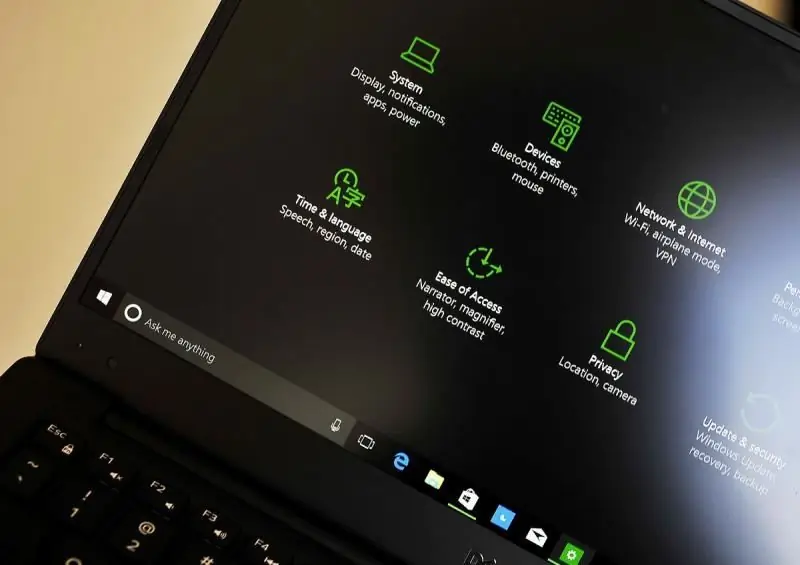
How to install a theme using an official store, website, third-party patch, website or application. How to create and save your theme. Installation problems
How To Install Clock On Windows 10 Desktop - Instructions And Tips For Adding And Configuring Widget

Where to find and how to install the Clock widget on the desktop in Windows 10. Popular programs for installing widgets: Gadgets Revived, MFI10, 8GadgetPack
The Desktop Disappeared In Windows 10 - Why And How To Get It Back, Instructions And Tips
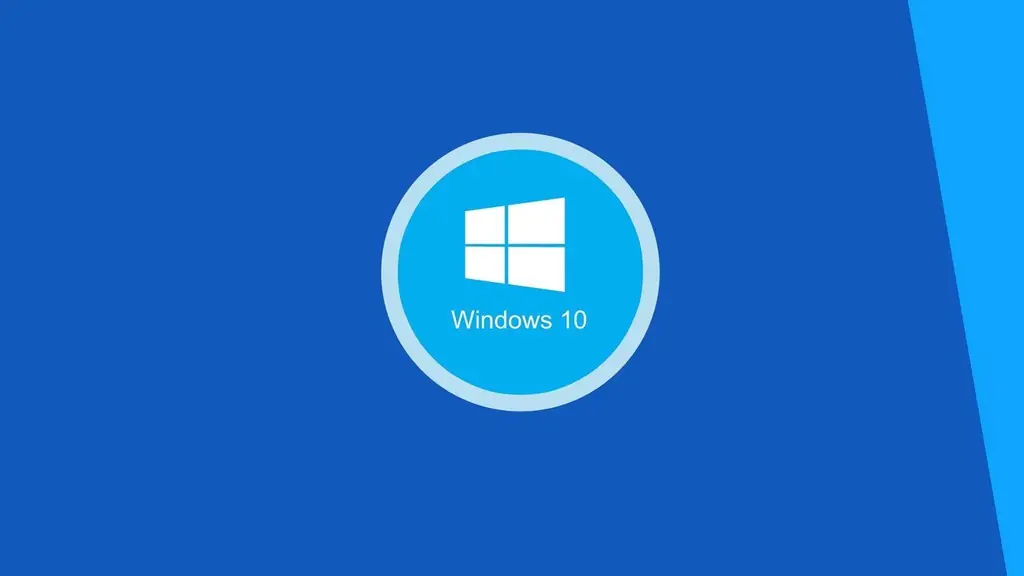
Reasons for the disappearance or incorrect display of the desktop (and its components) in Windows 10. How to solve the problem. Step-by-step instructions and videos
